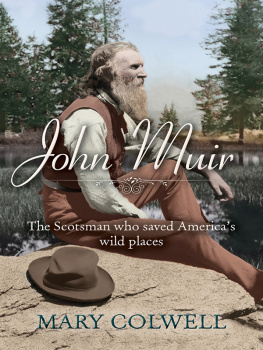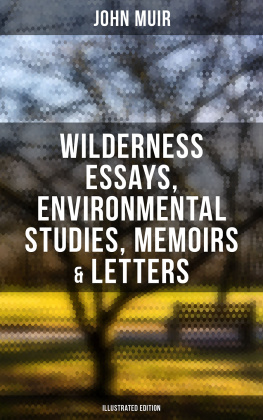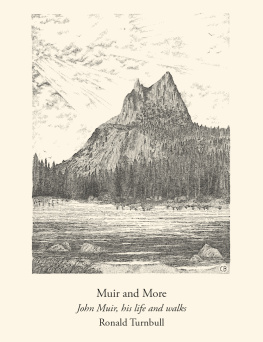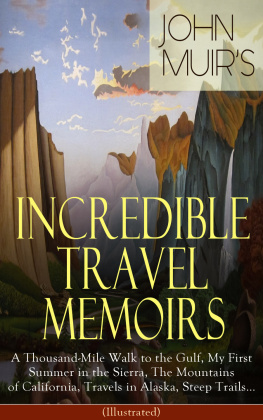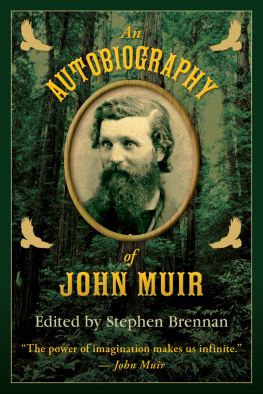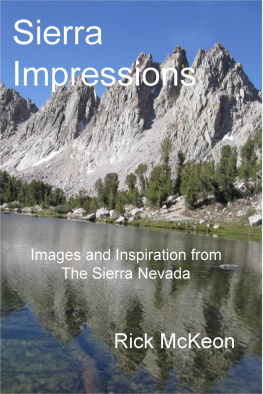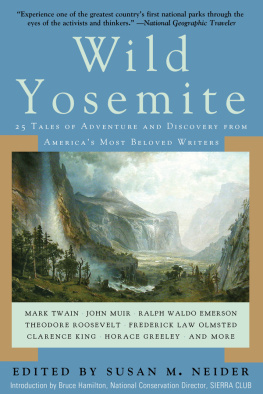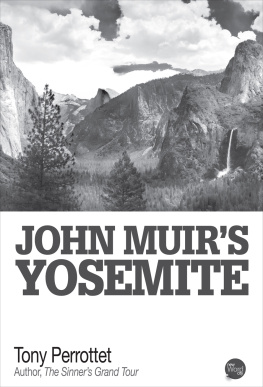Thanks are due to my husband and sons for putting up with my writing when I could have been sailing and cycling, to Chris Boles who shares my passion for John Muir, and to Peter France, my encourager, critic, and friend for many years.
Foreword
John Muirs name is rarely included in the pantheon of greats as far as most environmentalists are concerned. Unlike Rachel Carson, often top of the list, especially in the USA, or Fritz Schumacher, always in there somewhere. Despite being seen by many as the founding father of conservation, name-checking John Muir here in the UK would excite little interest, let alone enthusiasm among those in todays loosely-defined green movement, let alone those outside it.
As a relatively new admirer (having stumbled across the Muir Woods National Monument on a visit to San Francisco a decade or so ago), Mary Colwell sets out to explore that conundrum. And theres absolutely no doubt that John Muir was indeed a quite extraordinary man. Equally, theres no doubt that the author eloquently captures what it was that made him so special as a naturalist, pioneering explorer, botanist, glaciologist, mystic, writer and activist.
And part of this extraordinary life is that he lived through extraordinary times. Arriving in the USA in 1849 (after 11 years growing up in Dunbar in Scotland), he died there 65 years later in 1914 a period of unparalleled growth in the US in terms of population, industrialisation, growth, and environmental devastation.
Muirs response to that growth and destruction was fascinating. It wasnt until the 1890s that he took on the campaigning role for which this founding father is now revered. In that role, he was one of the founders (in 1892) and the first President of the Sierra Club, still one of Americas most admired and influential NGOs today. Before that, for 30 years, he was a traveller (early in his life, as the author puts it, he was more like a cork bobbing on an ocean rather than a man with a mission to fulfil), a reveller in and devotee of nature (wilderness pumped through Johns veins), a farmer (though more out of family duty than out of any natural calling) and, above all, a writer.
It took him a while to realise that this was his real calling there were many points in his life where it was his friends and mentors that had to urge him to focus more purposefully on his writing. His style was lyrical and deeply spiritual (he wrote like a preacher, but his congregation was as yet undefined). His description of the sequoia forests of California as Gods first temples is indicative of the kind of panentheism that sustained him throughout his life not so much worshipping nature in itself as worshipping God in every nook and cranny of nature. And no other author had quite the impact on gathering environmental sensibilities than he did.
He had the ability to reach through the page, take the reader by the hand, and guide them to singing streams, towering trees, intimate conversations with wildlife, and ranges of mountains so beautiful they made him fall on his knees in prayer. He was the voice of the wild, and the tip of his quill glowed with divine love.
One of Mary Colwells recurring questions is this: Who has taken up that baton? On the literary side of things, thats a hard question to answer, not least because that kind of Wordsworthian lyricism (in poetry or prose) is so deeply out of fashion. For instance, the writer Alastair McIntosh (brought up on the Isle of Lewis) would undoubtedly be counted as one of todays most influential writers on the relationship between humankind and the natural world, but his style is so much more economic, so much terser.
Its no accident that Alastair McIntosh draws so heavily on the residual fragments of wilderness to be found in Scotland. You wont find such wilderness elsewhere in the UK, and its disappearing fast in literally every corner of the world. Contemporary campaigners may still romanticise about the wild, but it has less and less authentic resonance these days, let alone the kind of real, emotional power that it did in the nineteenth century.
Which is why John Muir will be seen by many as an improbable role model for todays environmental battles, let alone as the hero the world is searching for to help guide us into the future. Though most environmentalists will wholeheartedly endorse Muirs belief that todays environmental destruction can only be stopped if people learn to love and respect the land, and would share his sorrow that peoples souls are being filled with the crass trappings of consumerism rather than with beauty and truth, the unattainable purity of his Earth first credo has not aged well.
As is borne out by the fact that the philosophical approach of his constant antagonist and personal nemesis Gifford Pinchot has fared much better. Pinchots Wise Use movement the forerunner of concepts like sustainable yield management and sustainable development more broadly is the dominant leitmotif in todays environmental debates.
Just compare Gifford Pinchot and John Muir as they fought it out hammer and tongs, between 1908 and 1913, over the campaign to stop the Hetch Hetchy Valley being turned into a vast reservoir to provide the burgeoning population of San Francisco with the water it so badly needed even then. Pinchot first:
The object of our forest policy is not to preserve the forests because theyre beautiful or wild or the habitat of wild animals; it is to ensure a steady supply of timber for human prosperity. Every other consideration is secondary.
And then John Muir:
These temple destroyers, devotees of raging commercialism, seem to have a perfect contempt for Nature, and, instead of lifting their eyes to the God of the mountains, lift them to the Almighty Dollar. Dam Hetch Hetchy! As well dam for water-tanks the peoples cathedrals and churches, for no holier temple has ever been consecrated by the heart of man.
Muir lost; Pinchot won. The pristine wilderness of Hetch Hetchy was duly and irreversibly desecrated. One hundred years on, the fact that Hetch Hetchys water still sustains San Francisco through the duration of the current and ever-worsening drought across the state of California reveals just how far beyond natures limits our industrialised, consumptive way of life has taken us.
And thats Mary Colwells most profound challenge to her readers. Could it be that decades of diligently seeking some accommodation, between, on the one hand, humankinds boundless needs and aspirations, and, on the other, natures bounded resources and fragile integrity, should now be seen as a worthy but ultimately forlorn failure? Should we be giving up on todays dominant pragmatism and reinventing instead Muirs uncompromising defence of (whats still left of) the natural world?

